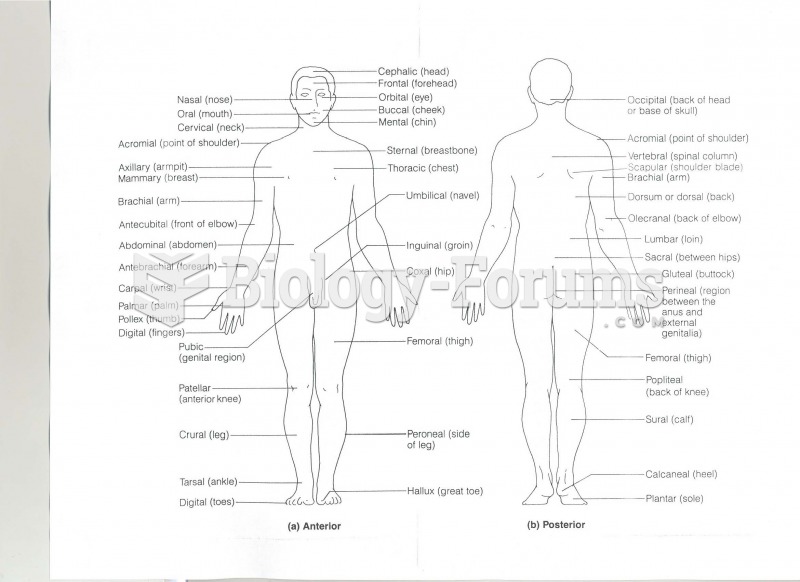|
|
|
The oldest recorded age was 122. Madame Jeanne Calment was born in France in 1875 and died in 1997. She was a vegetarian and loved olive oil, port wine, and chocolate.
As the western states of America were settled, pioneers often had to drink rancid water from ponds and other sources. This often resulted in chronic diarrhea, causing many cases of dehydration and death that could have been avoided if clean water had been available.
Fewer than 10% of babies are born on their exact due dates, 50% are born within 1 week of the due date, and 90% are born within 2 weeks of the date.
Blood is approximately twice as thick as water because of the cells and other components found in it.
Autoimmune diseases occur when the immune system destroys its own healthy tissues. When this occurs, white blood cells cannot distinguish between pathogens and normal cells.
 Relaxed ear position of a bored or resting horse. Lower lip is loose, also indicating relaxation. Th
Relaxed ear position of a bored or resting horse. Lower lip is loose, also indicating relaxation. Th
 Ears pulled back flat against the head with teeth bared and white of the eye showing, indicating ang
Ears pulled back flat against the head with teeth bared and white of the eye showing, indicating ang





